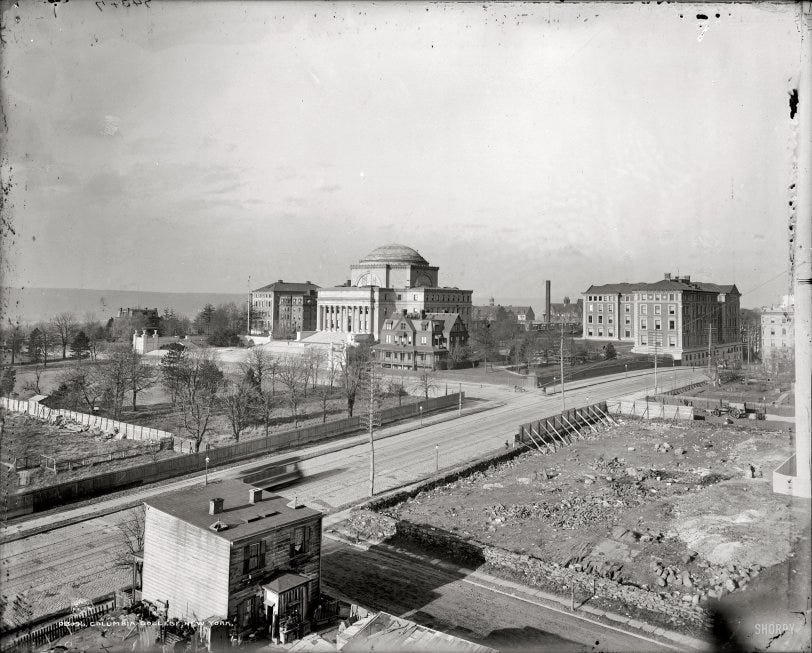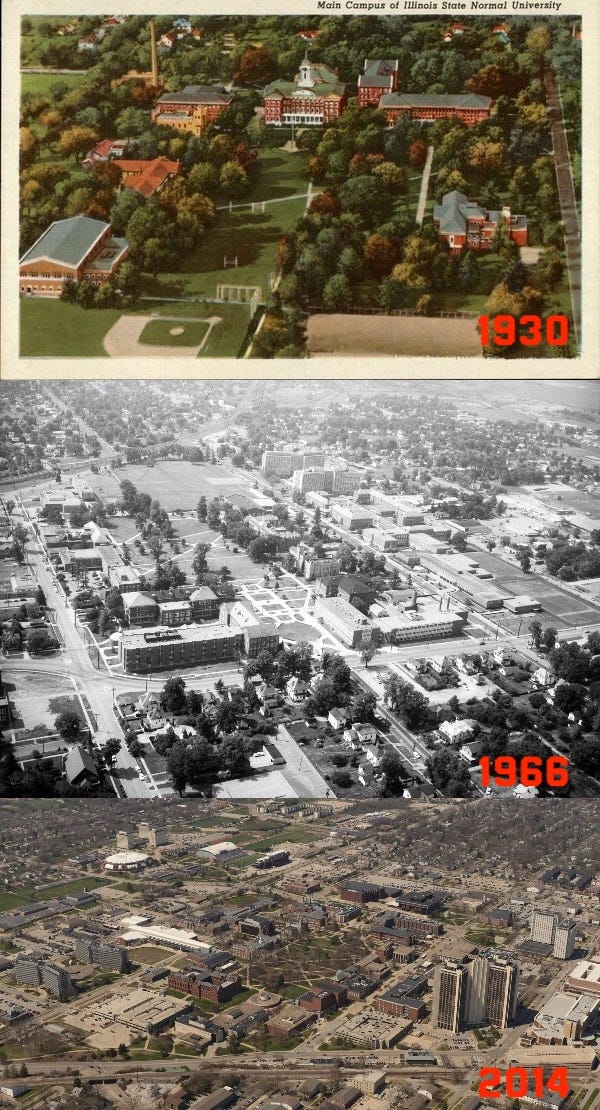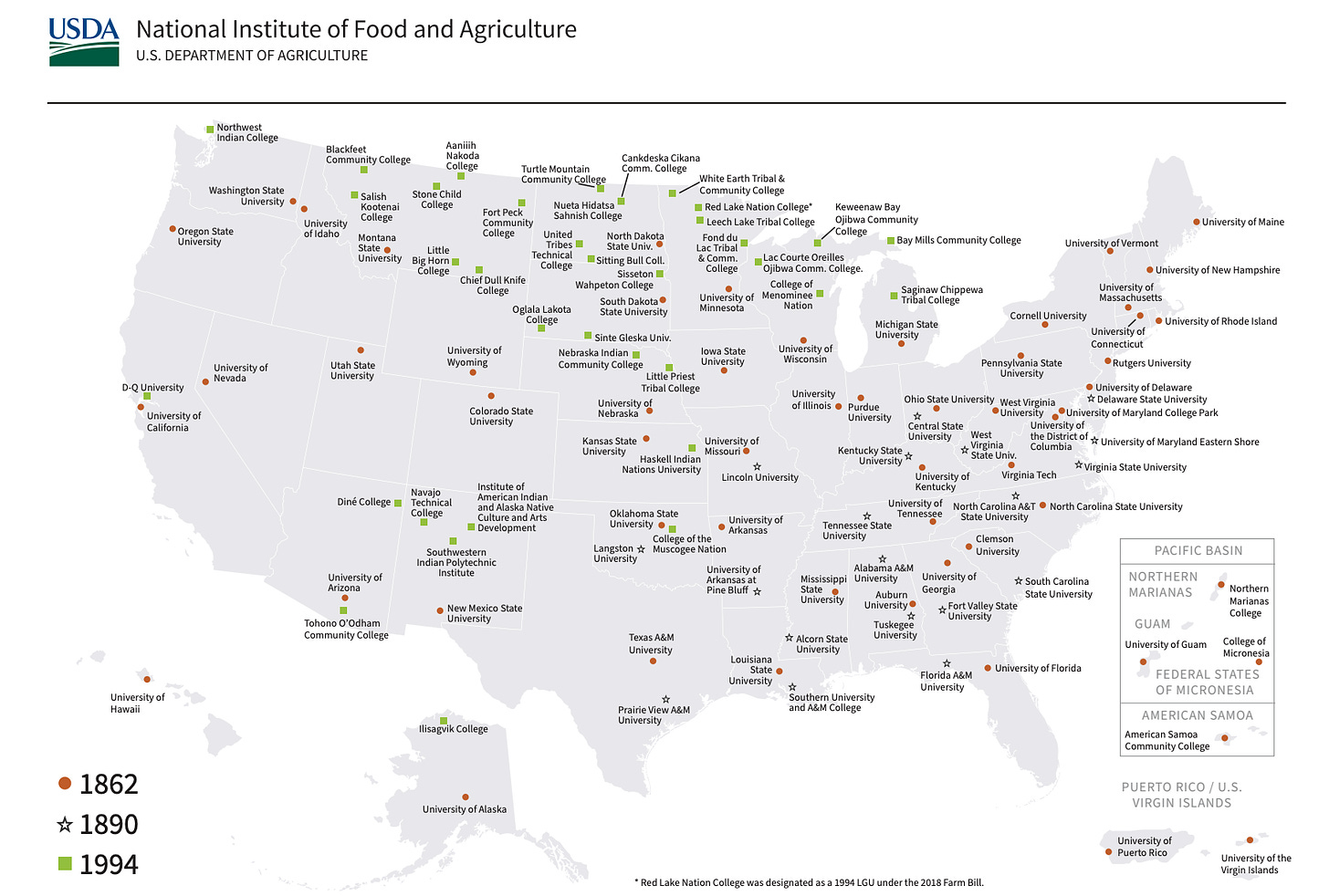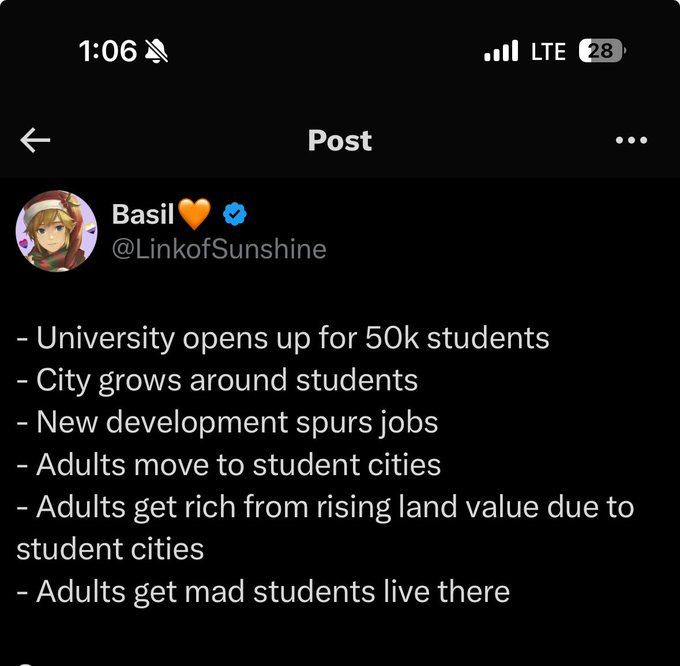What Even is a College Town?
While there is no exact definition of a college town, I provide some contexts to the word.
Not everyone is on the same page when they hear “College Town,” especially in places abroad where “College” means different things than “University.” In the UK, for instance, a college refers to roughly what Americans would consider high school (e.g., the education before going to university).
In the US, we sort of just casually interchange college with university. Going to college, college football, college town all refer to higher education in the US, university life.
So the question is, what is a college town? More specifically, this came up on the UrbanPlanning Subreddit. A user asked:
“Why are some College towns not ‘College Towns’?
“And are there examples of a College town becoming a ‘College Town’?”
In this article, I answered these questions and untangle the issue of the college town.
First off, there is no single definition for a college town, at least not in the US parlance. In The American College Town (2008), professor and geographer Blake Gumprecht defined the term in this way:
What is a college town? I consider as a college town any city where a college or university and the cultures it creates exert a dominant influence over the character of the town. This definition is deliberately imprecise because I do not believe there is a clear distinction between a college town and a city that is merely home to a college. They vary along a continuum.
I basically ascribe to this same continuum idea. There is no single, shared definition, but there are still college towns that everyone knows as college towns. These usually have three clear distinctions:
Students make up a large portion of the town’s population (often 20% or higher).
University is the town’s economic engine, employing much of the town (often 20% or higher).
The town’s cultural identity is wrapped up in the college.
The Traditional American College Town
When Americans think of college towns, they are often envisioning places like Bloomington, Indiana, Ann Arbor, Michigan, or Charlottesville, Virginia. Each hosts the state’s flagship institution: Indiana University, the University of Michigan, and the University of Virginia. The other conception is the small, secluded New England college town with a liberal arts college like Williams College in Williamstown, Mass.
1). In quintessential college towns, students dominate the population. There is no exact cutoff for the distinction, but in places like Bloomington or Charlottesville, students account for half the population. None of the towns I listed is the largest within the states, and they are usually considered somewhat secondary to other major cities.
2). It is not just the student numbers either: universities in college towns are strong anchors for employment. In some college towns, a third of the adult population might be employed by the university. For instance, Dartmouth College employs roughly 4,600 people, which would be about 54% of the population in Hanover, New Hampshire (pop. 8,520).1
While Dartmouth and Hanover may be on the extreme end of these numbers, it is not uncommon for these institutions to offer employment to 20% of the town population. This means that the economic center of these college towns is, of course, the college.
Given the massive pull of most of the town’s population, businesses, restaurants, housing, or other economic activity grow around the colleges. Even though these college towns might not have huge populations relative the biggest American cities, they often have some of the best urbanism for their size.
3). Colleges often also have a reverence within a state or region far beyond their size. Colleges are cultural hubs; they provide civic identity to a location. People in the region are coming and going, whether former students and now alumni, helping a relative move in, or some other college-related event.
In the big flagship schools, the entire town (and sometimes state) descends to the campus on college football Saturdays. In smaller liberal arts college towns, performances or events happening on campus attract the rest of the community. Flags of the college wave on Main Street, and everyone adorns the color scheme.
These towns have an identity of being college towns. It is a badge of honor to have a university within the town. Simply put, colleges in college towns are their icons. In this way, the sense of civic pride in the town cannot be separated from the college itself—they are one.
Colleges as a Development Tool
One distinction that the US has over many other higher education sectors around the world is that our big (and usually best) universities are not always located in a capital or big city. Instead, colleges are often in smaller or secondary towns within a state.
Colleges being in the middle of nowhere is no accident. It was purposeful for both private and public higher education development. In terms of religious colleges, they were often established far from the center of towns to keep pupils from the “corrupting influence” of the sinners in the city.

The government, too, established colleges in rural spaces. The Morrill Acts of 1862 and 1890 helped to establish 76 institutions that are well-known universities today. The initial idea was to use the establishment of colleges to push expansion of the country, especially westward, as described by Professor John Thelin in A History of American Higher Education:
[T]he act established a complex partnership in which the federal government provided incentives for each state to sell distant Western lands, with the states being obliged to use the proceeds to fund advanced instructional programs. The program began in 1862 with a generous incentive system whereby each state was allotted by formula a portion of federal lands commensurate with the number of its congressional representatives.
The sites for these established colleges were often in isolated sites, with the hope of spurring development and economic growth. States themselves were already using colleges to tame the wilderness of their lands. So-called normal colleges were established by states to train teachers for newly established K-12 schools and growing populations.
For instance, it is no coincidence that Illinois State University is located in Normal, Illinois. The town was named after what was then Illinois State Normal University in 1857. It was the first university in the state of Illinois, something other formal normal colleges boast, as they were explicit development tools of the day.

Most of these normal colleges eventually turned into full comprehensive institutions, but they are usually secondary to the state flagships. However, places like Arizona State University and even UCLA got started as normal schools, the latter of which was just a branch campus of what became San Jose State University. In these places, the normal schools eventually became the university we all know today, with the town maturing around them.
So the question about a town turning into a college town might be flipped around. Has a college town ever gone from a college town to just a town? Yes, when a college dies. For instance, I was sad to see that Aurora, New York, was labeled as “former college town” on Wikipedia since the closure of Wells College.
Town vs. Gown
One of the defining characteristics of the college town is the town and gown dynamic. This is the term to describe the relationship between the locals who live around the university and the university itself. This relationship is often fraught, with constant fights between these locals and the university-related development. (Note: This does give me a constant flow of stories to cover)
As an institution grows and expands its footprint to other parts of the town, or even just further out on the parts of campus it already owns, locals often feel they are getting squeezed out. This can also happen when private development pops up that is mostly geared towards the college and students. It is a version of gentrification sometimes called studentification.
Even though town locals do usually have that pride in the college I mentioned earlier, they usually do not like this studentification aspect of living in a college town. This consternation aligns strongly with classic NIMBY sentiments of freezing the town in amber. Locals often do not want to see the college grow, they don’t want more students living off campus, they don’t want new buildings popping up, they want things to stay the same.
Unfortunately, part of being in a college town is the dynamism. Colleges do change, grow, and adapt—they must to survive, especially now. But the thing missed is that college towns have always changed, grown, or adapted.
I don’t think most town locals hate colleges or their students. They hate the frat bros throwing ragers next door, new glass tower housing next to campus, and weekend gameday traffic. But freezing the college town in amber means abandoning the principles of a college town. In most cases, it was the town that popped up around the college, not the other way around.
College Town Meaning on College Towns
My own definition of college towns on this site is even wider. I often think about it in terms of places that are just near or next to a college. Even cities like Austin, Texas, or Madison, Wisconsin, don’t neatly fit into the quintessential college town label.
I am also interested in these issues globally, where there are certainly different experiences abroad than in the US. I even stumbled on a Wikipedia page entitled “List of College Towns” that has towns and cities from around the world. It is a fun list to poke through.
For instance, Seoul is not even listed there. But Seoul has college towns under my conception. There are over 120,000 college students from four major universities living near or around an area, that’s why I framed my high line article as in a college town (more people questioned my use of “high line” than anything else).
In the end, there are different kinds of college towns across the world. Some are more quintessential in that students dominate the population, they are the local economic engines, and are symbolic to the area. Others may look very different. I do know one thing: all of them will probably have some form of town vs. gown conflict that I will continue to cover on this site.
Note: What are some of your favorite college towns? Why do you like them? I may cover them in a future article. Thanks for reading College Towns. You can subscribe for free and without a Substack account (just an email).
Note, these are slight estimates given the available numbers. It should roughly be in this range.









I'm from Oberlin, Ohio -what I'd consider to be a quintessential college town - and am glad you are writing about this topic!
You’re speaking my language here. Hit the follow button—looking forward to what’s next.